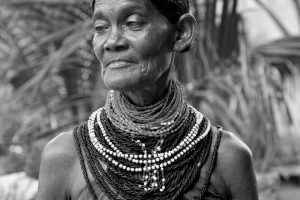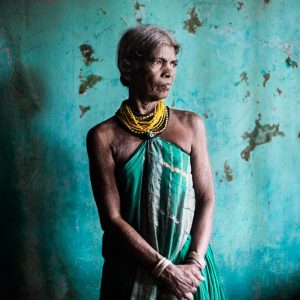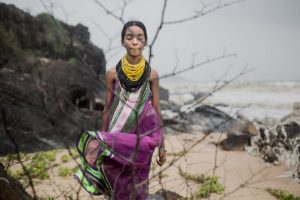Halakki Vokkaliga: Discover this powerful community from Uttara Kannada
Caked with sweat, toiling in the paddy fields, the Halakki Vokkaliga are exemplary of powerful women who hold their community together like glue.
The Halakki Vokkaliga are a community that live in the depths of Uttara Kannada in Karnataka. Living among the foothills of the Western Ghats, the Halakki have been held together by its women for over 400 years. Often compared to the Masai of Africa, as well as the Aborigines, the women dress in saris that are tied in a sarong-like manner, and play diverse roles within the community.

The roles of the Halakki women include helping with cultivation and the village economies, as well as holding together the community, thus giving them an important position within society. The women are distinguished by their attire, whether working in the paddy fields, or engaging in community matters. Glass and metal bangles, stacked and beaded necklaces are markers of their unique appearance. The short, blouse-less saris are designed to help the women adapt to the hot weather, and work efficiently in the fields.

The most widely believed myth about the origin of the tribe involves Shiva and Parvati. Upon dropping the milk and rice that she had collected for her husband, Parvati decided to craft dolls out of the mixture of mud and milk. These idols were brought to life by Shiva, and given the task of accompanying him in the fields, since they were essentially made of rice. They were named the Halakki.

The practices and beliefs of the Halakki Vokkaliga are centered around the cultivation of the land and the yield of fertile harvests. These beliefs find their roots in the musical traditions passed on through the community over generations. The women sing their songs to assert their identity and belief in nature’s karmic powers.
Sadly, globalization has led to a change in the outlook of many of the young natives. This has led to a large flux towards metropolitan cities, beyond the confines of their native culture. Precisely 4 women remain, who can successfully interpolate the traditional music of the tribe. Despite the decline of these age old practices with time, they remain distinct through the efforts of the remaining few through whom they live on.
Visit the 400 year old tribes of Halakki Vokkaligas and Sidhis in Uttara Kannada. India Times. April 2 2015. Web. http://economictimes.indiatimes.com/magazines/travel/visit-the-400-year-old-tribes-of-halakki-vokkaligas-and-sidhis-in-uttara-kannada/articleshow/46771930.cms
K, Bhumika. Beauty in all its glory. The Hindu. October 26,2014. Web. http://www.thehindu.com/features/metroplus/events/photographer-k-venkatesh-documents-the-halakki-vokkaliga-womens-traditional-dress-and-jewellery/article6533134.ece
This article was written by Seemab Alam and published on Nazariya, an initiative that is connecting rural India to metropolitan cities

